FIXED APPLIANCES
Opt for effective treatment of malocclusions with fixed appliances – under the care of professionals. Achieve a beautiful, healthy smile and greater self-confidence!
Fixed appliances are those that are permanently attached to the teeth throughout the entire treatment period. At our clinic, you can opt for treatment using traditional fixed appliances, as well as highly aesthetic options made from porcelain or crystal.
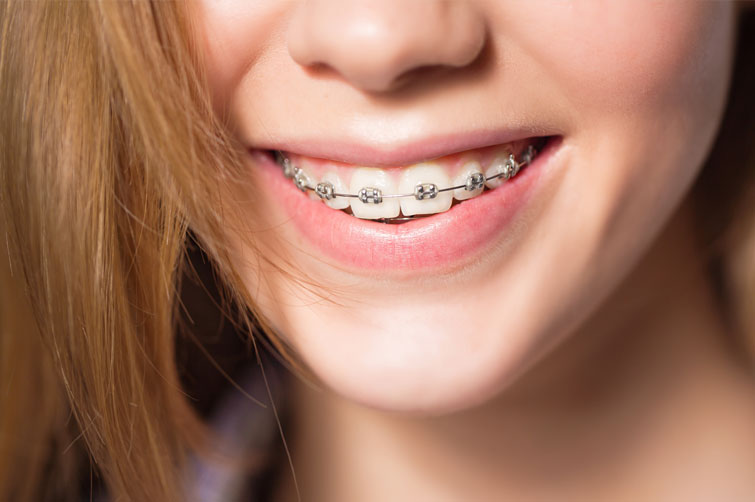
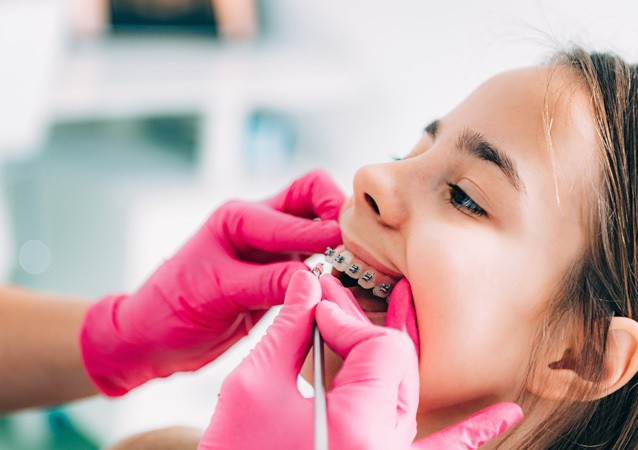
The brackets of fixed appliances are bonded to the labial (outer) and buccal (cheek-facing) surfaces of the teeth using a special adhesive. In the lingual technique, they are bonded to the lingual (tongue-facing) surfaces of the teeth. Consequently, they are completely invisible but can cause greater discomfort for the patient. They also tend to impede speech. This technique is less commonly used and is more expensive.
The primary components of a fixed appliance include:
Auxiliary components may also be used, such as: a metal arch running across the palate connecting the maxillary (upper jaw) molars (e.g., a transpalatal arch), a similar arch in the mandible (lower jaw) running along the lingual surfaces of the teeth (e.g., a lingual arch), springs, intermaxillary elastics, and others.
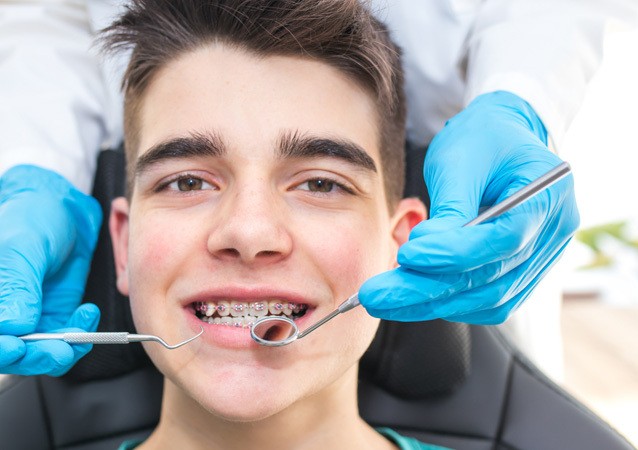
Most commonly, brackets are made of metal. Patients for whom aesthetics is a very important matter, decide to have more expensive, cosmetic brackets placed. They are made of porcelain or crystal. They are less visible, very similar to the color of the teeth.
There are also gold brackets – for those interested. The principles of operation of fixed appliance brackets do not depend on the material from which they are made, but on the details of their construction.
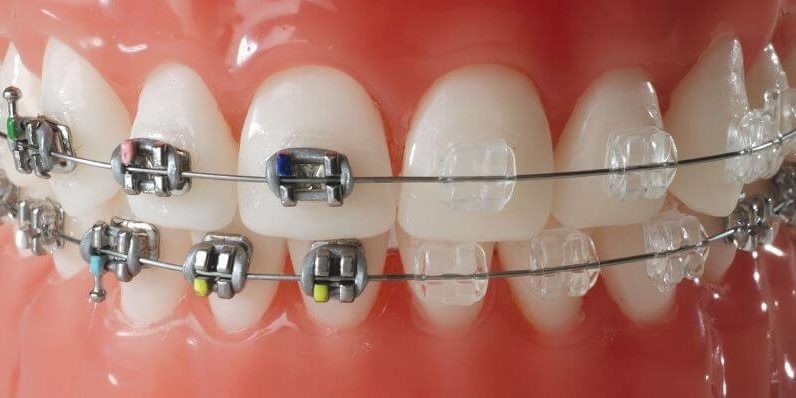
DO YOU WANT TO AMAZE WITH A BEAUTIFUL AND HEALTHY SMILE?
Start your treatment today! Make an appointment
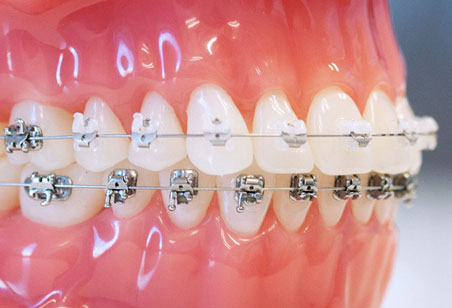
The applied elastic ligature or twisted metal ligature, are somewhat less comfortable for the patient than those with a clip in self-ligating brackets. The clip acts as an active element, attracting the archwire to the bracket when needed or allowing it some freedom. This reduces the friction between the bracket slot and the working archwire, which allows for faster tooth movement while reducing the tension of the entire system.
In comparison with traditional brackets, self-ligating brackets have a clip. This clip acts like a rubber or metal ligature, holding the main wire to the bracket. It also acts as an active element, attracting the bracket to the main archwire when needed or loosening when the force is too great.
Can only children and adolescents undergo orthodontic treatment? Treatment can be done at any age and practically only the efficiency of the periodontium limits these possibilities, as long as there are no other contraindications. Periodontal disease itself also does not exclude orthodontic treatment. It only needs to be conducted in close cooperation with a specialist in periodontal diseases. And the scope, type and methods of treatment used are individually adjusted to the patient.
Is the tooth enamel damaged when removing fixed appliances? No, enamel is the hardest tissue in the human body. When removing the appliance, the adhesive connecting it to the tooth crumbles.
Does a fixed appliance destroy teeth? No, cavities can form on the teeth when the patient does not take sufficient care of oral hygiene and does not clean the teeth properly. Hygienists during control visits pay attention to the state of hygiene and, if necessary, will remind how to care for the teeth.
Will treatment with a fixed appliance avoid tooth extraction? Not in every case. When there is a large disproportion between the size of the teeth and the width of the alveolar process, the number of teeth must be reduced, regardless of whether the treatment will be carried out with fixed or removable appliances.
Do fixed appliances work “by themselves” and do not require cooperation from the patient? This may not always be the case. Apart from great care for oral hygiene and systematic attendance at control visits, additional accessories are often included in the treatment, such as intermaxillary elastics or a headgear, which the patient puts on himself.
There are many types of retainers. They can be removable appliances that the patient has been treated with, but without turning the screw and without activation – worn only at night.
After removing the fixed appliance, it can be a plate similar to a removable appliance, without a screw and clasps, or a so-called splint, made of a transparent material like a tooth cover. It is worn initially around the clock (removing for meals) and later only at night. These are all removable retention appliances.
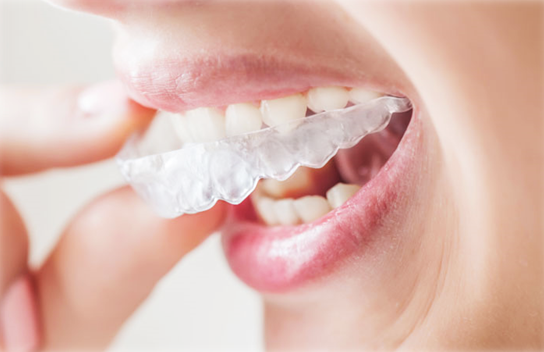
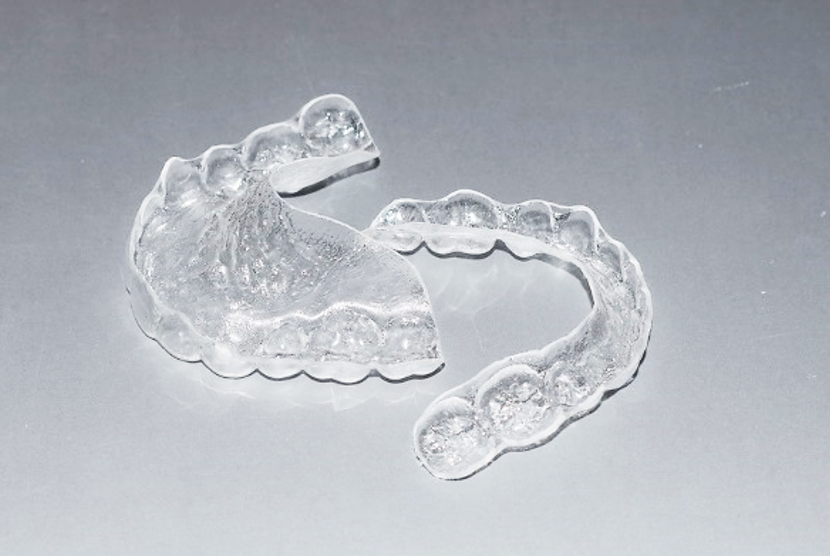
These transparent teeth aligners, almost invisible and very comfortable to use, maintain the achieved tooth position to a greater extent than Hawley plates. Their disadvantage is that patients with strong muscles wear them out faster, and the fact that filling a tooth with a filling that goes beyond the outline registered during the scan for the splint may make it impossible to put it on. Making more fillings, or aesthetic reconstructions, may require making a new splint. You also need to remember that it is quite delicate, not very visible and easy to lose or destroy. It must not be scalded either, as it is thermoformable and high temperature will deform it. In a situation where the patient was treated for a defect consisting in the wrong relationship of the dental arches to each other, and the effect obtained is not yet very stable (the so-called double bite), a positioner can be made, i.e. two splints combined in a bite that is correct, or in both splints make hooks for elastic elastics, with which the patient can be treated after removing the fixed appliances. They maintain the position of the teeth in the arches, but change the position of the dental arches in relation to each other favorably. The same can be achieved by making a block appliance as a retention appliance.
Fixed retention is a wire glued on the palatal surfaces in the maxilla and lingual in the mandible on the incisors and canines. Its task is to maintain the teeth set with a fixed appliance.

We use cookies
We use cookies to make your experience on our websites better, as well as for statistical and advertising purposes. By not blocking these files, you consent to their use and storage on your device. Please remember that you can change your browser settings to block cookies at any time. For more information, please see our privacy policy.